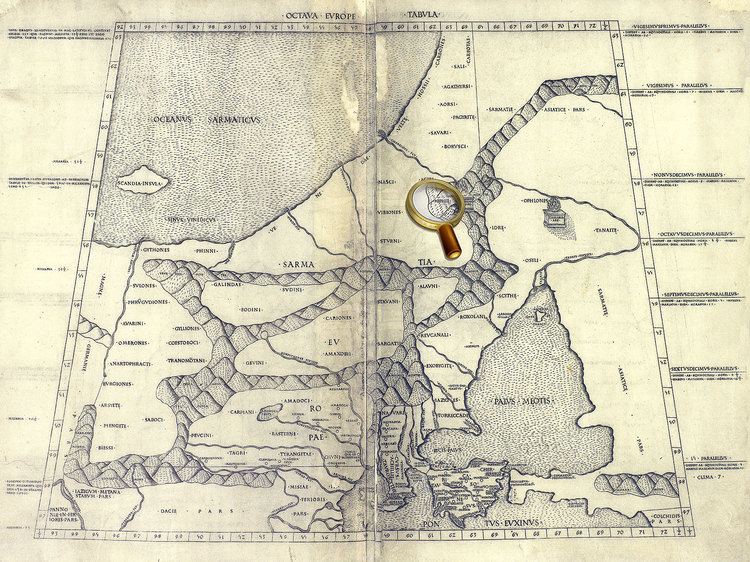 | ||
The Riphean Mountains are mountains mentioned by authors of classical antiquity (Apollonius of Rhodes, Aristotle, Hecataeus of Miletus, Hippocrates, Ptolemy, Plutarch, and others), but whose location is uncertain.
Later Roman writers applied the term to mountains in the north of Europe or Asia. Pomponius Mela placed them within the Arctic Circle. Pliny the Elder assigned them to the Ural Mountains. Noah Webster wrote that the earliest geographers applied the term to the Alps in Switzerland and claimed that they are the source of the Danube. All sources agree that the Riphean mountains were cold and blanketed in snow.
The people living around the mountains in antiquity were variously called Riphaeans (Mela), Arimphaei (Pliny), or Arimaspi. The name of the mountains has also been connected by Christian theologians with Riphath, son of Gomer in Genesis 10. The Book of Jubilees (8:12, 16, 28) mentions a mountain range it calls Rafa, which Professor R.H. Charles associated with the Riphaean, i.e. Ural Mountains.
The Montes Riphaeus mountain range on the Moon is named after the Riphean Mountains.
The Riphean geochronological period was also named after the Riphean Mountains, referring to the Ural Mountains.
